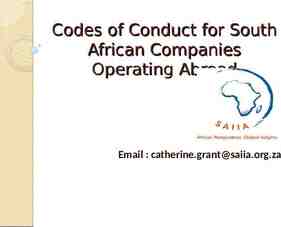Data for Decision-Making Module 1: Introduction to Data for
20 Slides6.12 MB
Data for Decision-Making Module 1: Introduction to Data for Decision Making
Overview Introductions Administrative tasks What is data? What is decision-making? Course goals and objectives Case study Problem definition activity Key terms Data visualization activity
Introductions Instructor Introductions Participant introductions What organization are you from? What do you hope to get out of this class?
What are data? Work with a partner to brainstorm five words that you think of when you hear the word data. Write these words on a piece of paper. Be prepared to share them with the class.
Data definition At is most basic level, data are collections of facts and information. This information can be packaged as numbers, words, measurements, observations, or descriptions.
What is decision-making? After collecting data (information), you are free to make a decision. When you make a decision, you can use the data you collected as evidence to make an informed decision.
Data-driven decision-making Putting it all together: Data-driven decisionmaking is the practice of basing decision on the analysis of data rather than using your intuition, guess, or estimate.
Course goals and objectives Goals: The goal of this 3 day workshop is to equip you with ability to understand issues and resources around data and data collection, and learn the importance of using the data to make an informed, evidence-based decision. This workshop is meant to help you and your organization better understand, use, and manage data for decision making. Outcomes: Use a basic set of processes and questions to assess the data environment at your own organization. Understand data lifecycle theory, basic skills when working with data, and the resources needed to support working with data. Be able to create a data project plan that is specific to your own organization.
Case study How can data be used to solve a problem? Are there any examples of governments using data to make decisions that the participants can think of? What about organizations that use data to make decisions?
Discussion Questions What was the problem the UNDP in Armenia was trying to solve? How did they use data collection to solve it? How did they use new data to solve the problem? How can they now use that data to make a decision?
Problem Definition Activity
Key terms Qualitative: Information that cannot be expressed as a number or quantified. Qualitative data include descriptive data such as your friend’s favorite holiday, the most common given names in your town, or how to describe the smell of a freshly cooked meal. Quantitative: Information that can be counted or measured.
Qualitative vs. Quantitative
Primary vs. Secondary Primary: Data that have been collected from an original source for a specific purpose, for example, if a school wanted to know what their students thought of the provided lunch they would question the pupils directly. Secondary: Data that are not originally collected by a group for specific purpose, for example, finding out the average age of a population by using national survey data.
Key Terms Dataset: Data selected and arranged in rows and column Documentation: documents that provide proof or evidence of something, or are a record of something. Data visualization: a way to help people understand the significance of data by placing them in a visual context. Data visualization is the presentation of data in a pictorial or graphical format. It enables decision makers to see analytics presented visually, so they can grasp difficult concepts or identify new patterns.
Data Visualization
Data Visualization
Key terms Stakeholders: a person with an interest or concern in something. For example, who are the stakeholders in this class? Who are the stakeholders at a restaurant? Who are the stakeholders at a football match?
Data Visualization Activity
Debrief

























